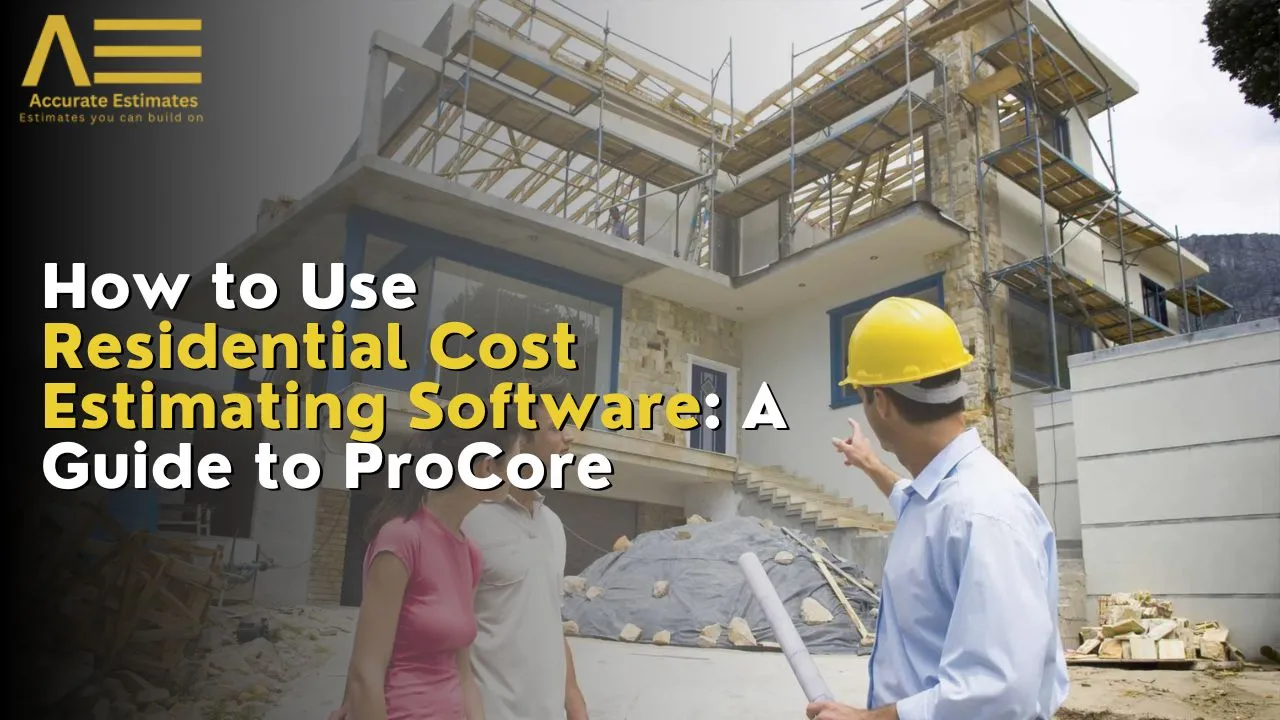How to Use Residential Cost Estimating Software: A Guide to ProCore

Table of Contents
Understanding the Basics
What is residential cost estimating software, and are you ready to learn more? In this guide, we’ll explore how to use ProCore, a leading software tool designed to streamline the estimation process for residential construction projects. Whether you’re a seasoned home builder or just starting in the industry, understanding how to leverage estimating software can significantly enhance your efficiency and accuracy. Let’s get started!
What is Residential Cost Estimating Software?
Before we delve into the specifics of ProCore, it’s essential to grasp the fundamentals of residential cost-estimating software. This specialized software is designed to assist contractors, builders, and construction professionals estimate the costs of building or renovating residential properties. A budgeting tool is crucial for project planning, budgeting, and keeping construction projects on budget.
Why Choose ProCore?
ProCore is a well-established player in residential construction cost estimating software. Its reputation is built on its robust features, user-friendly interface, and ability to simplify complex estimating processes. ProCore offers a comprehensive suite of tools to help you create accurate estimates, improve the efficiency of your projects, and increase profitability.
Getting Started with ProCore
Installation and Setup
To use ProCore, you first need to install and set up the software on your computer. The installation process is typically straightforward, and the software’s user-friendly interface makes it accessible to professionals of all skill levels. Once installed, you must configure ProCore to align with your project requirements.
Creating a New Project
After successful setup, it’s time to create a new project within ProCore. Name the project, describe the location, and provide information about the client. ProCore allows you to create and manage multiple projects simultaneously, making it a versatile choice for contractors with diverse portfolios.
Inputting Project Data
ProCore’s strength is its ability to capture and calculate various project data accurately. To get started, input information such as:
- Materials: Enter details about the materials required for the project, including type, quantity, and cost.
- Labor Costs: Estimate labor costs by inputting the number of workers, their wages, and their estimated duration.
- Subcontractor Costs: If your project involves subcontractors, you can include their costs in your estimate.
Generating Estimates
Once you’ve input all the necessary data, ProCore’s powerful algorithms generate detailed residential cost estimates. The software provides a breakdown of costs, allowing you to see where your budget is allocated. You can easily adjust and fine-tune your estimates to align with your project’s needs.
Exporting and Sharing
ProCore allows you to export your estimates in various formats, making it easy to share them with clients, stakeholders, or team members. This feature ensures transparent communication and helps everyone involved stay on the same page regarding project costs.
ProCore’s Key Features
ProCore stands out in residential cost estimating software due to its impressive feature set. Some noteworthy features include:
- Template Library: Access a library of templates for common residential construction projects, saving you time on data entry.
- Integration: Seamlessly integrate ProCore with other project management and accounting software for a unified workflow.
- Real-Time Updates: You will receive real-time cost updates as you update your project details.
- Cloud Storage: Securely store and access your project data in the cloud, ensuring it’s always available when needed.
Tips for Efficient Estimating
As you explore the world of residential cost estimating software, consider these tips to make the most of your ProCore experience:
- Regularly update your project data to reflect any changes in materials, labor costs, or project scope.
- Leverage ProCore’s reporting tools to gain insights into your project’s financial health.
- Ensure effective communication among stakeholders by utilizing ProCore’s collaboration features.
- Explore ProCore’s training resources and support options to ensure you use the software to its fullest potential.
- Consider hiring skilled Residential Cost Estimators to ensure more efficient and accurate estimates.
Conclusion
In conclusion, ProCore is a powerful tool for residential cost estimation that can benefit both seasoned professionals and newcomers to the construction industry. Following the steps outlined in this guide and making the most of ProCore’s features can improve your project planning, budgeting, and overall project management.
What are you waiting for? Use ProCore to take your residential construction projects to the next level. Take a look and find out what the difference is.
Also Read: Tips to Manage Construction Delays
FAQs
- Is ProCore compatible with other construction software tools?
ProCore offers integration options with various project management and accounting software, allowing for a seamless workflow and data synchronization.
- Can ProCore be used for commercial construction projects as well?
While ProCore is primarily designed for residential construction, it can be adapted for commercial projects with some customization.
- Is ProCore suitable for small-scale residential projects?
Absolutely! ProCore’s flexibility suits projects of all sizes, from small renovations to large custom home builds.
- Does ProCore offer customer support and training resources?
Yes, ProCore provides comprehensive support and training resources to help users make the most of the software, including tutorials and webinars.


